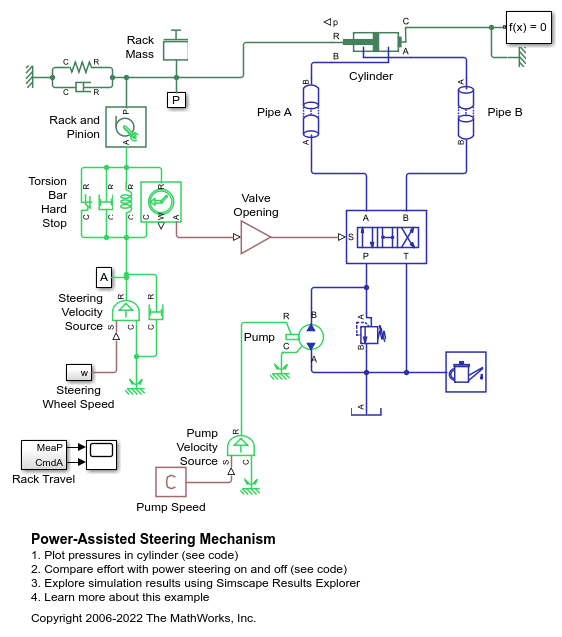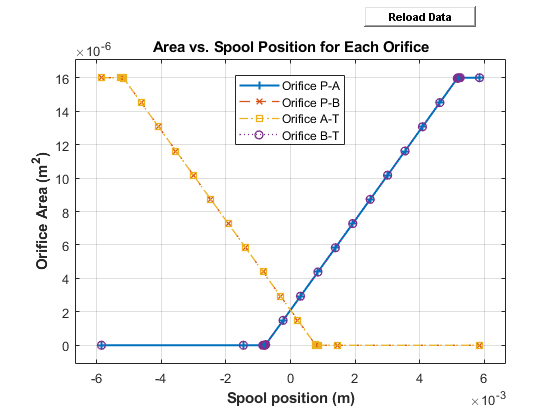Power-Assisted Steering Mechanism
This example shows a simplified version of a power-assisted steering mechanism. The hydraulic actuation system includes a double-acting hydraulic cylinder, 4-way valve, fixed-displacement pump, and a pressure-relief valve. The steering rack acts against a load modeled by a spring and damper.
The valve opens based on the amount of twist of a torsion bar installed between the steering wheel and the pinion of a rack-and-pinion mechanism. The rotation of the steering wheel causes the torsion bar to twist relative to the pinion. The deformation of the bar is transformed into opening of the 4-way valve, which connects the chambers of the cylinder to pressure or return lines depending upon the direction of rotation. The PS Gain block Valve Opening converts torsion bar twist to the amount of opening for the 4-way valve. Setting the Gain parameter of this block to 0 disables the power steering.
If the torsion bar deformation exceeds 9 degrees the wheel is connected directly to the pinion through the hard stops installed in parallel with the torsion bar. The cylinder moves the steering rack which twists the torsion rod in the opposite direction until the valve is in the neutral position.
Model

4-Way Valve Opening Characteristics
This plot is generated by right-clicking on the 4-Way Directional Valve (IL) and selecting Fluids > Plot Valve Characteristics.

Simulation Results from Scopes

Simulation Results from Simscape Logging
The plots below show the amount of assistance the power steering system provides to the driver as the wheel is turned. The greater the difference in the cylinder chamber pressures, the more assistance that is provided.

The plots below compare the amount of effort required when the power steering is turned on and turned off. For the same steering sequence, the amount of torque required when the power steering is turned off is much higher. The power steering is turned off by setting the gain in Valve Opening to 0.
